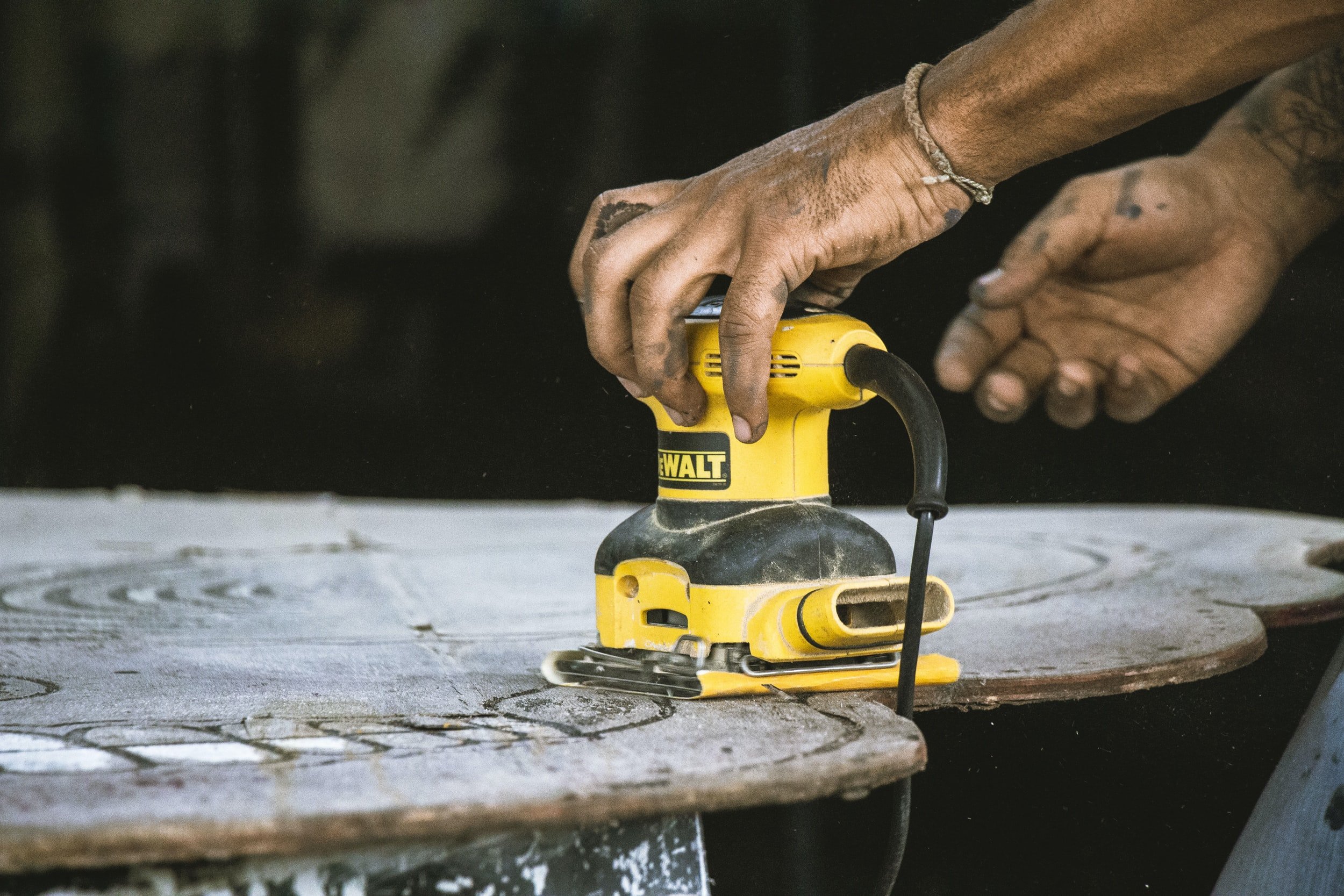What Is An Electric Sander & How Do You Use It?
Have you ever seen someone use a tool on IG and thought, “what the $&?! is this?”
Same.
This series aims to break down the basis so you can stop being afraid and get started.
First up — a DIYer’s best friend and the ultimate arm workout: A SANDER ✨
Sander: The Perfect Beginner’s Tool
This handy tool is the perfect first tool in your arsenal. I bought my first sander for $20 at Lowe’s and it had a very short cord and I bought the wrong sandpaper for it. We all start somewhere y’all.
If you’re just getting started DIYing, I highly recommend starting by flipping furniture. A sander is all you really need when it comes to tools and it opens so many possibilities. “A sander is a tool used for finishing applications, often used to prepare surfaces for paint, stain, or seal. Sanders use sandpaper to remove material from the wood's surface.”
Common Projects You’ll Need A Sander For
Furniture redos
Building shelves, furniture, or frames
Removing paint or stain
Maintaining butcher block countertops
Sanders can range in price anywhere from $20 to $150 depending on what kind, brand, and capabilities.
Kinds of Sanders
Orbital Sander: If you’re going to get one sander — this is it. It’s easy to use, affordable, and extremely versatile. It has a circular pad that spins as it sands.
Belt Sander: I just recently got a belt sander for refinishing large wood slabs we found. They are industrial-style sanders that have a “belt” of sandpaper that rotates around to smooth the wood. This is a sander for large wood projects.
Corner Cat or Finishing Sander: This is one of the best sanders for furniture because you can sand flat surfaces, as well as corners and nooks, as its name suggests. If you're refinishing furniture on a somewhat regular basis, it makes a great investment.
There are many other sanders out there, but these three should get the job done.
Choosing A Sandpaper Grit
The grit number of a sanding product indicates the size of the abrasive particles. The lower the number, the larger the abrasive particles; they remove more material but create more noticeable scratches. A higher number indicates smaller particles, which don’t remove as much material but leave a finer, more polished appearance.
— Lowe's Home Improvement
Types of Grit
#60–#80 Grit (Coarse): Coarse sandpaper is for big jobs such as removing layers of paint, varnish, rust, or reshaping wood.
#100–#150 Grit (Medium): Smoothing wood, removing scratches, generous purpose
#180–#220 Grit (Fine): Roughen up surfaces for painting or staining
#320 Grit (Ultra-Fine): Finishing wood to give it a glass-like smooth surface



